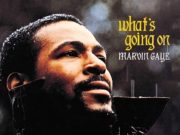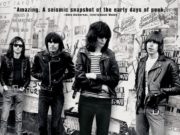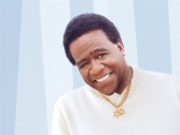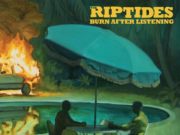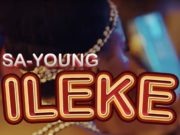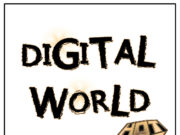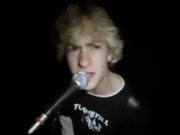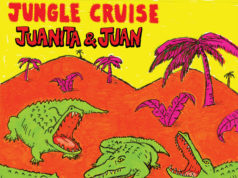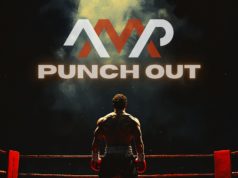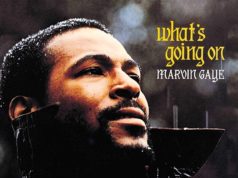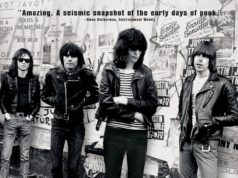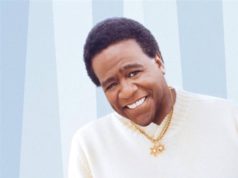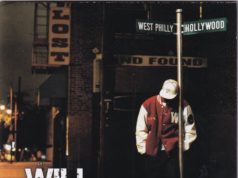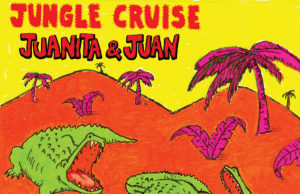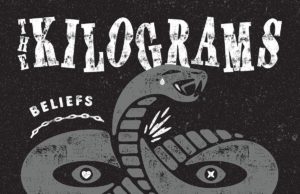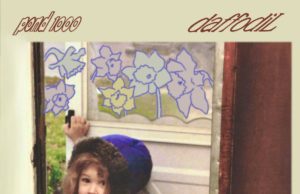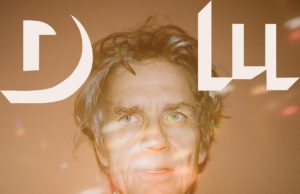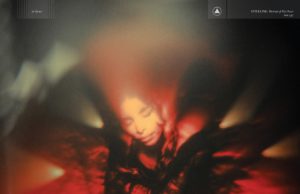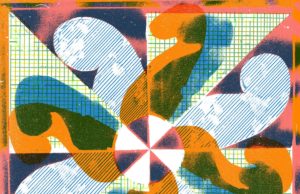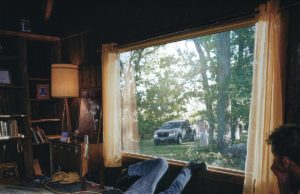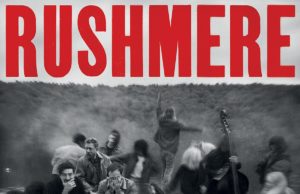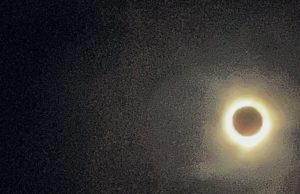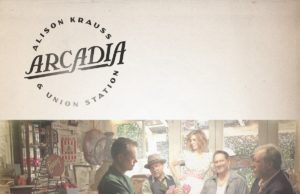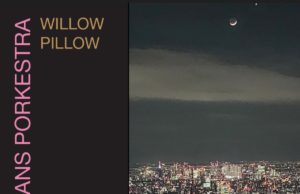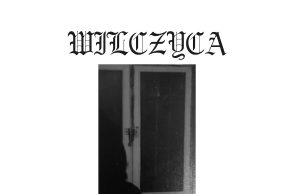 I have already written about bands and performers who also have alter egos, or secret side projects, but today I’m going to dive into the rabbit hole of bands “formerly known as” rather than “also known as.”
I have already written about bands and performers who also have alter egos, or secret side projects, but today I’m going to dive into the rabbit hole of bands “formerly known as” rather than “also known as.”
You know — just like how the City of Kitchener used to be called Berlin, A&P grocery stores were reborn as Metro ones, and The Originals changed their name to The New Originals, then The Thamesmen, and finally Spinal Tap.
The Spinal Tap example is fictional, obviously, but it does illustrate a pretty common theme: Most bands had several names before settling on a winner. In this piece, though, I’m not going to focus so much on all the different names bands have had, but rather specifically on the ones who actually recorded under a previous name.
I’ll start with the one which gave me this idea in the first place — Simon & Garfunkel. The folk duo began singing together in 1956 as Tom And Jerry, and even had a minor hit (thanks to payola) with a track called Hey, Schoolgirl. Incidentally, Art Garfunkel went by Tom Graph — a surname he chose because of his math prowess — while Paul Simon went with Jerry Landis, the family name inspired by that of a girl he had been dating. Hey, Schoolgirl got them a spot on American Bandstand, but their two followup singles flopped. After graduation in 1963, the pair reemerged as Simon & Garfunkel.
One of the more famous ones is The Beatles, because they are obviously one of the most famous and most-studied groups of all time. They made recordings as The Quarrymen as early as July 1958, but also as The Beat Brothers when backing Tony Sheridan in June 1961. The other names used include The Beatals, The Silver Beetles, Silver Beatles and finally The Beatles. The earliest known recording is a Paul McCartney / George Harrison composition called In Spite of All The Danger, which is available on Anthology 1. The musicians are McCartney on rhythm guitar and vocals, John Lennon on lead vocals and rhythm guitar, Harrison on lead guitar and vocals, John “Duff” Lowe on piano, and Colin Hanton on drums.
Black Sabbath had two earlier names, but the only one they used for a recording was Earth. They actually recorded nearly an entire LP worth of material, which you can find online called The Rebel, from 1969. It’s the same lineup as the first Black Sabbath album.
Pink Floyd also had a bunch of names before their founding frontman Syd Barrett christened the band after bluesmen Pink Anderson and Floyd Council. They were Sigma 6 (1963–1964), The Meggadeaths (1964), The Abdabs (1964), The Screaming Abdabs (1964), Leonard’s Lodgers (1964), The Spectrum Five (1964), The Tea Set (1964–1965), The Pink Floyd Sound (1965), and finally The Pink Floyd (1965–1967). Their earliest recordings, however, were made as The Tea Set, even though those recordings are credited simply to Pink Floyd on their Early Years (2016) box set and on 1965: Their First Recordings (2015)
There were no recordings made by The Bo-Weevils, but when the band changed their name to The Ravens, they did scores of auditions for U.K. record labels. When they were finally signed by Pye, they changed their name to one you probably recognize: The Kinks.
There is one recording by The High Numbers, who would eventually be renamed The Who. They actually had already been The Who for a bit, after months of development as The Detours. The Who became The High Numbers from July to October 1964, recorded a single, and switched back to The Who, which they have remained ever since.
Before KISS, there was Wicked Lester — not quite the same lineup, and certainly not the same formula. Wicked Lester featured occasional French horns, softer rock and no makeup. Formed in 1970 as Rainbow, the band recorded an entire album for Epic in 1971-’72 which was never released. When Epic threatened to put it out, in an effort to capitalize on KISS’s popularity, the band bought the rights. They released a handful of the tracks on their 2001 box set, though many bootlegs of the other songs are out there. Wicked Lester’s lineup: Keyboardist/multi-instrumentalist Brooke Ostrander, bassist/vocalist Gene Klein (later Simmons), guitarist Ron LeeJack, guitarist/vocalist Stanley Eisen (the future Paul Stanley), guitarist Stephen Coronel and drummer Tony Zarella.
When Led Zeppelin first formed in 1968, they played a gig as The New Yardbirds, because Jimmy Page had been the lead guitarist in The Yardbirds, which had just fizzled out. In 1967, Page recorded Beck’s Bolero with Jeff Beck, Keith Moon, John Paul Jones and Nicky Hopkins. Pleased with the result, Page was keen to start a Cream-like “supergroup” with the lineup or perhaps with John Entwistle on bass — to which Moon quipped that it would go over like a lead balloon. This simile inspired the name Page would choose for his new band featuring himself, Jones, John Bonham and Robert Plant: Led Zeppelin.
The debut Chicago album is actually a self-titled debut by Chicago Transit Authority, commonly referred to as Chicago I — because its followup was Chicago II.
In 1978, the fledgling Joy Division initially recorded demos under their original name, Warsaw — a name which was also used for an early Joy Division song.
Rather than being an early name for the band, Strontium 90 was more like a precursor to The Police, in that it briefly featured all three of the members. Strontium 90 were a four-piece formed by ex-Gong bassist Mike Howlett. It featured Sting on guitar, bass and vocals and Andy Summers on lead guitar. When regular drummer Chris Cutler was unavailable for a string of shows, Sting brought in former Curved Air drummer Stewart Copeland, who he’d been working with in an early lineup of The Police, featuring Henry Padovanni on guitar instead of Summers. Summers suggested the three of them would be the best possible lineup, and the band was born.
Before The Band were The Band, they were The Hawks — the backing band for Ronnie Hawkins, and later for Bob Dylan on his infamous electric tour in 1966. For a time, the group’s sole American — drummer, vocalist and mandolin player Levon Helm — was considered the leader. As such, they went with the name Levon & The Hawks when they cut a single in 1964.
Mammoth is the name Wolfgang Van Halen gave himself and his band. It also happens to be one of two names his dad Eddie and uncle Alex’s band went with before they were famous. Though Van Halen never actually recorded under their other names. Neither, sadly did Eagles. It sure would have been cool to have a song by Teen King & The Emergencies. Conversely, it’s rather unfortunate there are recordings by The Golliwogs, before they were renamed Creedence Clearwater Revival.
Both early names of Ontario’s Finger Eleven are awful. Initially called Stone Soul Picnic, they changed their name to Rainbow Butt Monkeys and got signed to Mercury Records where they released a handful of EPs and a full-length album — 1995’s Letters From Chutney — before changing to Finger Eleven. It means penis. Get it? Hilarious.
A more legendary Canadian band started out in Winnipeg in the ’50s as the brainchild of frontman Chad Allan (Allan Kobel). First they were Allan And The Silvertones, then they were Chad Allan And The Reflections. Next came Chad Allan And The Expressions. In 1965, they cut a single of Shakin’ All Over — issued to radio stations in a mysterious sleeve marked with “Guess Who?” Listeners responded strongly to a contest to both guess or name the mystery band. In fact, the song was the first Canadian single to go No. 1 in the U.S. The record became credited to Guess Who? — Chad Allan And The Expressions. Burton Cummings became the group’s lead vocalist in 1965, and Allan left shortly afterwards to pursue other interests. The name was shortened to The Guess Who.
When the debut album by brothers Ron and Russell Mael first appeared in 1971, it wasn’t credited to Sparks, but Halfnelson. When it was reissued in 1972, the band had changed the name, but nothing else.
There’s nothing on Spotify, but I’m sure something exists somewhere of the early version of The Bee Gees, when they were a ’50s skiffle group called The Rattlesnakes.
Vocal quartet The Primettes were created as a sister group to Detroit’s The Primes. After winning a 1960 Canada Day talent competition in Windsor, lead singer Diana Ross asked her neighbour Smokey Robinson to help her, Florence Ballard, Mary Wilson and Betty McGlown get an audition with Berry Gordy’s Motown label. Gordy thought the trio were too young. After McGlown got engaged, she left the group and was replaced by Barbara Martin. They kept pestering Gordy and eventually convinced him to let them provide handclaps to Motown recordings by Marvin Gaye and Mary Wells. In 1961, Gordy finally agreed to sign the group, providing they changed their name, since The Primes had already morphed into The Temptations. He suggested some names, but Ballard came up with The Supremes.
The debut recordings by Mississauga rockers Billy Talent are readily available on streaming services — but you have to look for Pezz. Their debut album sounds, to my ear, not unlike Billy Talent — but does include an entertaining cover of The Tragically Hip’s New Orleans Is Sinking.
Most Radiohead fans write off their debut album Pablo Honey as the weakest one — even though it contains Creep, their most popular song. But fans seem to love the jangly demos they made in the mid-’80s when they were still known as On A Friday.
I’m not one of those who believes everything Kurt Cobain ever did was genius. A lot of it is horseshit. Pre-Nirvana, Cobain made a demo tape in the spring of 1986 under the charming name of Fecal Matter. It’s actually a pretty good laugh, and was apparently cool enough that Krist Novoselic wanted to get involved after he heard it. It features Cobain on vocals and guitar and Melvins’ Dale Crover on drums, bass and backing vocals.
In 1970, before they broke through as glam rock stars in the U.K., Slade were actually a bunch of skinhead-looking toughs. Technically their second album Play It Loud was a flop. Their 1969 debut was under a different name. Beginnings by Ambrose Slade had covers of Frank Zappa’s I Ain’t Got No Heart and The Amboy Dukes’ Journey To The Centre of Your Mind. But this isn’t the band’s first recorded effort. That came in 1966 when they were known as The N’Betweens.
Electric Light Orchestra and Starship belong in a different category — bands who had success under different names. ELO made their debut self-titled album in 1971 (released in the U.S. as No Answer in 1972) at the same time, and in the same studio as they made their last album as The Move (1971’s Message From The Country). They simply transitioned from one to the other as the Roy Wood-dominated Move morphed into the Jeff Lynne-dominated ELO. It’s a similar story with Starship, except the 1980s San Francisco pop group started off as the legendary 1960s psychedelic group Jefferson Airplane, which signed a record deal in 1965. The band splintered apart by the early ’70s and re-emerged as Jefferson Starship in 1974. They evolved into Starship in 1984.
The Pogues settled on their name partially because the BBC banned their original name Pogue Mahone, an anglicized version of an Irish phrase meaning “kiss my arse.” Founded in 1982, the band’s initial recordings were as Pogue Mahone. One of them (Dark Streets of London) can be found on their 1984 debut, Red Roses For Me.
Formed in 1985, indie rock trio Dinosaur added Jr. to their name after the release of their second album in 1987 because they were being sued by members of Dinosaurs — a supergroup made up of members of Quicksilver, Hot Tuna, The Grateful Dead, Country Joe & the Fish and Jefferson Airplane. All the material in the band’s discography is credited to Dinosaur Jr. now. ’80s pop band The Bangles have their roots in post-punk. Their 1981 demo material — from when they were still known as The Bangs — has since been made available. It’s quite awesome.
When most people think of ZZ Top, the image of the matching long beards of Billy Gibbons and the late Dusty Hill probably come to mind. But the original duo was Gibbons and first drummer Dan Mitchell. The pair formed ZZ Top in Houston in 1969 from the ashes of The Moving Sidewalks, which they had both been in since the mid-’60s. The Moving Sidewalks released some singles and an LP called Flash (1969). Gibbons and Mitchell created ZZ Top to go after a new, bluesy rock sound. The name was inspired by concert posters on the wall of Gibbons’ home — B.B. King and Z.Z. Hill. Billy thought the two-initials thing was cool, and considered merging the two names into ZZ King. But that didn’t sound right. ZZ Top sounded better.
The Beatles launched Apple Corps. and Apple Records in 1968 — quietly much earlier than that, if you look at the liner notes and copyright information on Sgt. Pepper. The new label needed acts and everyone at Apple was encouraged to be in the A&R game. Beatles roadie Mal Evans championed a group called The Iveys that nobody else was terribly keen on, until the band recorded Maybe Tomorrow. It was decided a name change was needed, and when Badfinger (named after Badfinger Boogie, the working title of With A Little Help From My Friends) recorded McCartney’s Come And Get It, the rest was history.
Finally, there’s no mistaking who Southern Death Cult would eventually become, thanks to the distinctive lead vocals of Ian Astbury. But that’s where similarities end, at least when it comes to the biggest hits the band would release from the mid-’80s and early ’90s. Southern Death Cult, funny enough, were from West Yorkshire, England and can be described as post-punk goth. The band came together in 1981 and disbanded two years later. They recorded one eponymous album, which was released in 1983 after the split. That year, Astbury got together with guitarist Billy Duffy and formed Death Cult — later renamed The Cult.
• • •
Area Resident is an Ottawa-based journalist, recording artist, music collector and re-seller. Hear (and buy) his music on Bandcamp, email him HERE, follow him on Instagram and check him out on Discogs.




